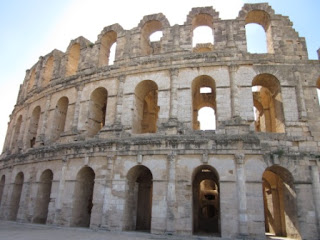Cairo is a city that really benefits from those pictogram tourist maps, where the significant attractions obscure the route detail and distances between them. Don’t get me wrong, the sites are spectacular with the various pyramid and pharaonic archeological areas, the citadel and grand mosques of the old Islamic city.
But in between is frenetic mayhem in a traffic swirl beneath a haze of smog. The infrastructure is crumbling under the weight of 25 million people, and for a civilization that introduced iconic feats of engineering and architecture; it is sad and somewhat ironic to see the surrounding areas of urban filth and decay.
While nothing newer than 3000 years old is particularly attractive, that stuff is awe inspiring. Is it easy to wander the complex that includes the Great Pyramid, Sphinx and adjacent support pyramids (although there are camel and horse-drawn carriage options as well).
The Nile flows slowly north dividing the City in two – the gritty downtown working area and the more serene West Bank (where all the high end hotels and embassies are situated). There is, however, a more equitable split of accumulated floating garbage on both sides. I think we’ll journey further up river before we venture out on the water.
Arriving in Luxor was quite a breath of fresh air, both literally and figuratively (and this after a 10 hour overnight train ride). While the Pyramids get all the hype and photo presence, the magnificent temples and tombs in the Luxor area provide meaningful insights into the life and, more importantly, death rituals of this ancient civilization.
The grandeur of the Karnak and Luxor temples is evidenced immediately by the corridors of stone carved pillars (about 20 metres high and 3 metres in diameter), and then you discover that even the lintels have been carved and painted.
A few skyscraper obilisques reveal more truths in their detailed hieroglyphics. The immense statues here, and similarly in the smaller sister temple back at Luxor (they are only 3 or 4 km apart) are a prelude to the tomb complexes we will be visiting tomorrow on the West bank of the Nile.
For the rest of the day we opt for the sunset Felucca (Nile sail boat) ride, as the river is more natural and serene this far south (despite the myriad river barges and high end hotels at shore side). Our captain – Mohammed – seems a bit of a “Gilligan” in terms of nautical skills, having to use the gang plank as a paddle to assist with our return up river. All the while, we were under the watchful eye of Che Guevera – whose portrait was painted onto the sail (at least it wasn’t Ahab or Noah).
The Desert Mountains on the West bank seemingly form a pyramid-like shape, which apparently satisfied the ancients so as not to require more new pyramid construction to house their tombs. The area is chock-a-block with burial chambers, the most important being within the “Valley of the Kings”. There are a few dozen, and for our $20 entry fee we got to choose three (Tut was excluded as were a couple of others – from what we could tell, so as to offer additional fee opportunities). Our guide explained how the tomb depth was the measure of stature, based primarily on the term length of their rule.
While in Cairo earlier we had visited the Egyptian museum, where most of the tomb content is now housed – ornate crypts, sarcophagi, mummies, jewelry, pottery and other trinkets (the facility is jammed with objects continuously being extricated from archeological sites over the years in a facility that is itself a representation of 19th century museum storage and presentation techniques).
Much needed context for the museum pieces is revealed within the ornately carved and colourfully painted subterranean tombs. Each section of wall outlines a specific motif regarding the afterlife, with animal-headed humans, evil and protector snakes, and the ever-present scarab.
Similar clusters of tombs honour the “lessers” including the Valley of the Queens where we actually thought the quality and preservation of the murals was at its highest (although our guide suggested this was because these chambers were more recently discovered and therefore less impacted and damaged). We ended the day staring down the monolith Colossi of Memnon – 20 metre high twin seated Pharaoh statues from 1400 B.C.

















































